How to Train Clients With Dementia (Step-by-Step Guide)
Learning how to train clients with dementia can significantly broaden your personal training clientele. However, it’s vital to have the correct knowledge and tools to train these clients safely and effectively. Harnessing certain features of personal training software can assist in this endeavor. Find out how to train clients with dementia and learn about the necessary tools in this comprehensive guide.
- Training clients with dementia involves creating a routine that is simple, familiar, and enjoyable, with an emphasis on coordination and balance exercises.
- Most clients with dementia will benefit from gentle, low-impact exercises that also stimulate their cognitive functions, such as dancing or tai chi.
- The use of workout and assessment software can help ensure your client’s safety and aid them in maintaining their physical abilities with fewer disruptions.
Entering into the realm of training special populations, like clients with dementia, can offer personal trainers a fulfilling way to diversify their business.
To train clients with dementia effectively, it’s crucial to have a deep understanding of the condition, along with the right tools to facilitate beneficial training; this is where personal training software shines. By taking advantage of the features offered by top-tier online personal training software, you can train clients with dementia in a way that works for their unique needs, not against them.
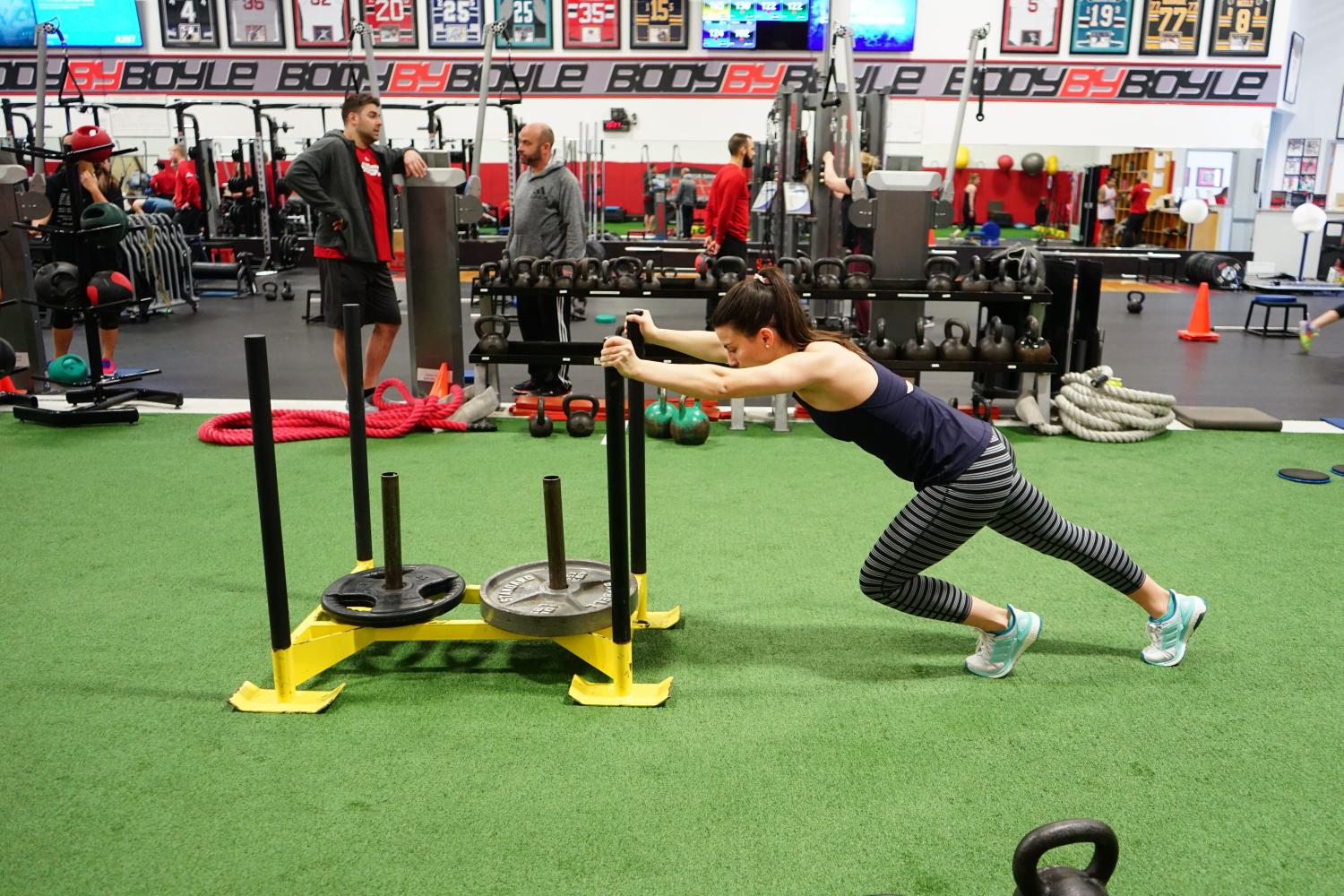
Experience the benefits of the best personal training software online from Exercise.com by booking a demo now!
Understanding Dementia and its Impact on Training
Living with dementia can present numerous challenges for both individuals and their caregivers. As the disease progresses, it can significantly impact a person’s cognitive abilities, memory, and overall quality of life. However, incorporating a tailored training program can help individuals with dementia maintain their physical and cognitive abilities, promote independence, and enhance their overall well-being.
Dementia is a progressive neurological disorder that affects memory, thinking, and behavior. It is essential to have a comprehensive understanding of dementia and its impact on training clients. Dementia can result in difficulties in communication, decreased attention span, impaired judgment, and problems with coordination. As a trainer, it is crucial to be aware of these challenges and adapt training techniques to meet the unique needs of each individual.
One important aspect to consider when training clients with dementia is the potential for behavioral changes. Dementia can lead to increased agitation, aggression, or apathy in individuals, which may affect their willingness or ability to participate in training sessions. It is important for trainers to be patient, understanding, and flexible in their approach, taking into account the individual’s emotional state and adjusting the training accordingly.
In addition to behavioral changes, dementia can also impact an individual’s ability to learn and retain new information. Trainers should be prepared to use repetition, visual aids, and other memory-enhancing techniques to help clients with dementia better understand and remember the exercises or instructions. It may also be beneficial to break down complex movements or tasks into smaller, more manageable steps to facilitate learning and ensure success.
The Importance of Tailoring Training Programs for Clients with Dementia
Each individual with dementia has different abilities and limitations. Hence, tailoring training programs to meet their specific needs is vital. The person-centered approach is highly effective in dementia care and training. It involves understanding the individual’s interests, preferences, and abilities, and using this information to design a personalized training program. By tailoring the training program, it is possible to enhance engagement, motivation, and overall outcomes for clients with dementia.
One important aspect of tailoring training programs for clients with dementia is considering their cognitive abilities. Dementia affects cognitive functions such as memory, attention, and problem-solving. Therefore, training programs should be designed to accommodate these limitations and provide appropriate support. For example, using visual aids, simplifying instructions, and breaking down tasks into smaller steps can help individuals with dementia better understand and engage in the training.
In addition to cognitive abilities, it is crucial to take into account the physical and sensory changes that often accompany dementia. Many individuals with dementia experience difficulties with mobility, coordination, and sensory perception. When tailoring training programs, it is important to create a safe and accessible environment that accommodates these challenges. This may involve modifying equipment, providing additional support, or adapting exercises to suit the individual’s physical capabilities.
Identifying Cognitive Abilities and Limitations in Clients with Dementia
When training clients with dementia, it is essential to assess their cognitive abilities and limitations accurately. This evaluation helps determine the appropriate level of difficulty for training activities and exercises. Cognitive assessments, such as the Montreal Cognitive Assessment (MoCA), can provide valuable insights into an individual’s cognitive functioning. By understanding their strengths and weaknesses, trainers can create a training plan that promotes success while avoiding overwhelming tasks.
One important aspect of assessing cognitive abilities in clients with dementia is understanding the different domains of cognition that may be affected. These domains include memory, attention, language, executive function, and visuospatial skills. By evaluating each of these domains, trainers can gain a comprehensive understanding of the client’s cognitive strengths and weaknesses.
In addition to cognitive assessments, it is also crucial to consider the client’s emotional well-being and mental health. Dementia can often lead to mood changes, depression, and anxiety. These factors can significantly impact a client’s ability to engage in training activities. Therefore, trainers should incorporate strategies to address emotional well-being and provide a supportive environment for clients with dementia.
Effective Communication Strategies for Training Clients with Dementia
Communication can become challenging for individuals with dementia due to memory loss and language difficulties. To facilitate effective training, it is crucial to use communication strategies specifically designed for clients with dementia. These strategies may include using simple and concise language, maintaining eye contact, using visual cues, and allowing sufficient response time. Such techniques can enhance comprehension and facilitate meaningful interactions during training sessions.
Another important communication strategy for training clients with dementia is the use of non-verbal cues. Non-verbal cues, such as gestures, facial expressions, and body language, can help convey messages and emotions when verbal communication becomes difficult. These cues can provide additional context and support understanding for clients with dementia.
In addition to using specific communication techniques, it is also important to create a calm and supportive environment during training sessions. Minimizing distractions, reducing background noise, and ensuring adequate lighting can help clients with dementia focus and engage in the training process. Creating a comfortable and familiar setting can also help reduce anxiety and promote a sense of security for clients with dementia.
Creating a Safe and Supportive Training Environment for Clients with Dementia
Creating a safe and supportive training environment is essential to ensure the well-being of clients with dementia. This includes removing any potential hazards from the training area, such as loose rugs or clutter, which may increase the risk of falls. Additionally, trainers should prioritize emotional safety by fostering an atmosphere of trust and respect. By making the training environment safe and supportive, individuals with dementia can feel comfortable and focused on their training goals.
Another important aspect of creating a safe and supportive training environment for clients with dementia is to provide clear and consistent communication. Trainers should use simple and concise language, avoiding complex instructions or jargon that may confuse or overwhelm individuals with dementia. Visual aids, such as pictures or diagrams, can also be helpful in enhancing understanding and promoting effective communication during training sessions.
In addition to physical and emotional safety, it is crucial to consider the individual needs and preferences of clients with dementia. Trainers should take the time to understand each client’s unique abilities, limitations, and interests, and tailor the training program accordingly. This may involve adapting exercises or activities to accommodate cognitive impairments, providing additional support or modifications as needed. By personalizing the training experience, clients with dementia can feel empowered and motivated to actively participate in their own well-being.
Incorporating Memory Enhancement Techniques into Training Sessions
Memory loss is a common symptom of dementia, making it essential to incorporate memory enhancement techniques into training sessions. These techniques may include repetition, visualization, and the use of mnemonics. By providing opportunities for memory practice and reinforcement, individuals with dementia can improve their memory skills and retain information. Introducing memory enhancement techniques can also enhance their overall confidence and independence.
One effective memory enhancement technique is the use of spaced repetition. This technique involves reviewing information at increasing intervals over time. By spacing out the practice sessions, individuals with dementia can strengthen their memory recall and retention.
Another helpful technique is the use of external memory aids. These aids can include calendars, reminder apps, and written notes. By utilizing these tools, individuals with dementia can compensate for their memory deficits and improve their ability to remember important tasks and appointments.
Utilizing Visual Aids and Reminders to Enhance Training for Clients with Dementia
Visual aids and reminders can serve as powerful tools in training individuals with dementia. Visual cues, such as step-by-step instructions, diagrams, or color-coded charts, can provide additional support during exercise routines or tasks. Utilizing memory aids, such as calendars or reminder boards, can also help individuals remember training schedules and activities. By incorporating visual aids and reminders, trainers can facilitate understanding, reinforce learning, and improve overall training outcomes for clients with dementia.
In addition to visual aids and reminders, it is important to create a supportive and familiar environment for clients with dementia during training sessions. This can include using familiar objects or incorporating elements from their daily routines into the training activities. Creating a comfortable and safe space can help reduce anxiety and increase engagement in the training process. Additionally, trainers should be patient, understanding, and flexible in their approach, adapting the training methods to meet the individual needs and abilities of each client. By creating a personalized and supportive training environment, trainers can further enhance the effectiveness of visual aids and reminders in improving training outcomes for clients with dementia.
Structuring Training Sessions to Maximize Engagement and Retention in Clients with Dementia
Structure and routine play a significant role in the lives of individuals with dementia. When designing training sessions, it is essential to establish a predictable and consistent structure. This helps individuals feel more secure, which, in turn, promotes engagement and enhances retention. Breaking down training activities into manageable steps, with regular review and reinforcement, can also contribute to improved learning and overall progress in clients with dementia.
Another important aspect of structuring training sessions for clients with dementia is the use of visual aids. Incorporating visual cues, such as pictures, diagrams, or written instructions, can help individuals with dementia better understand and remember the information being presented. Visual aids can also serve as a helpful reminder during the training session, especially for individuals who may have difficulty with verbal communication or processing spoken instructions.
In addition to visual aids, it is crucial to create a supportive and comfortable environment during training sessions. Minimizing distractions, such as excessive noise or clutter, can help individuals with dementia focus better and stay engaged in the training activities. Providing a calm and soothing atmosphere, with appropriate lighting and comfortable seating, can also contribute to a positive learning experience for clients with dementia.
Promoting Independence and Confidence in Clients with Dementia through Training
Training programs for individuals with dementia should aim to promote independence and enhance confidence. Tailoring activities to match each person’s abilities and interests can empower them to perform tasks on their own. Additionally, providing positive reinforcement, praise, and celebrating personal achievements can significantly boost self-esteem. By promoting independence and confidence, individuals with dementia can experience a sense of accomplishment and maintain their quality of life.
Addressing Challenging Behaviors during Training Sessions with Clients with Dementia
Challenging behaviors, such as agitation or resistance, can occur during training sessions with individuals with dementia. It is essential to approach these behaviors with patience, empathy, and understanding. Identifying triggers and employing de-escalation techniques can help manage challenging situations effectively. Creating a calm and supportive environment, offering choices, and adapting training techniques can reduce distress and facilitate a more positive training experience.
The Role of Caregivers and Family Members in Supporting Training for Clients with Dementia
Caregivers and family members play a crucial role in supporting training programs for individuals with dementia. They can provide valuable insights into the individual’s abilities and preferences and offer assistance during training sessions. Collaborating with caregivers and family members helps ensure consistency and reinforces training outside of scheduled sessions. Providing education and support to caregivers can equip them with strategies to continue training and promote overall well-being at home.
Evaluating Progress and Adjusting Training Approaches for Clients with Dementia
Regular evaluation of the progress of clients with dementia is essential to determine the effectiveness of the training program. Formal and informal assessments can be used to assess improvements in physical and cognitive abilities, as well as overall well-being. Based on these evaluations, trainers can adjust the training approaches to meet evolving needs and make necessary modifications to ensure continued progress and engagement.
Overcoming Common Barriers in Training Clients with Dementia
Training clients with dementia may involve overcoming various barriers such as frustration, apathy, or lack of motivation. By acknowledging and understanding these barriers, trainers can develop strategies to address them effectively. Adapting training activities, providing positive reinforcement, and incorporating meaningful and enjoyable activities can help overcome these challenges. Flexibility and patience are key in finding the best approach for each individual.
Incorporating Meaningful Activities and Personal Interests into Training Programs for Clients with Dementia
Engaging individuals with dementia in meaningful activities and incorporating their personal interests into training programs can enhance motivation and overall enjoyment. Incorporating familiar hobbies or pastimes into training sessions helps create a sense of purpose and familiarity. Trainers can explore activities that align with an individual’s preferences, such as gardening, art, or music, to promote engagement and maximize the benefits of training.
Training clients with dementia requires a person-centered approach that focuses on understanding their unique needs, abilities, and limitations. By tailoring training programs, incorporating memory enhancement techniques, utilizing visual aids, and creating a safe and supportive environment, trainers can facilitate meaningful and effective training experiences. Collaboration with caregivers and family members, regular progress evaluation, and overcoming common barriers are essential components of successful training for individuals with dementia. With proper training and support, individuals with dementia can maintain physical and cognitive abilities, promote independence, and improve their overall well-being.
What training activities can you do with dementia?
Training activities for individuals with dementia should focus on maintaining physical health and cognitive function. Simple exercises like walking, chair exercises, gentle yoga or tai chi, and dancing can be beneficial. Additionally, cognitive activities such as puzzles, memory games, painting, and simple craft tasks can help stimulate the brain.
What are the best exercises for people with dementia?
The best exercises for people with dementia are low-impact activities that promote physical health and cognitive function. These can include walking, chair yoga, tai chi, swimming, and dancing. It’s important that these activities are enjoyable and familiar to the person, as this can enhance their participation and engagement.
What are meaningful activities for dementia?
Meaningful activities for individuals with dementia often involve tasks that they enjoyed before their diagnosis or that evoke positive memories. These could include listening to their favorite music, watching old movies, looking through photo albums, gardening, baking, or simple crafting. Engaging in these activities can provide a sense of purpose and improve mood.
How do you motivate someone with dementia?
Motivating someone with dementia can be achieved by tailoring activities to their interests, abilities, and past experiences. Using positive reinforcement, such as praise and encouragement, can also boost their motivation. Maintaining a routine can provide a sense of security and familiarity, which can encourage participation. It’s also important to create a calm and supportive environment to reduce potential frustration or stress.
What are 5 strategies you should use to communicate with people with dementia?
- Speak Clearly and Simply: Use simple, clear sentences and speak slowly. Avoid complex language or abstract concepts that may cause confusion.
- Maintain Eye Contact: This can help to focus their attention and shows that you’re engaged in the conversation.
- Use Non-Verbal Communication: Body language, facial expressions, and gestures can provide additional cues about what you’re saying.
- Listen Patiently: Be patient and give them time to process information and respond. Avoid interrupting or rushing them.
- Rephrase Instead of Repeat: If they don’t understand something, rephrase it rather than just repeating it. This can help clarify your message.
Use the Best Personal Training Software to Offer a Stellar Client Experience
Training clients with dementia requires a comprehensive and tailored approach. See how Exercise.com can help.

To learn more about how Exercise.com can help you run your fitness business, book a demo now!
Creating Training Plans for Clients with Dementia
Here’s how you can help your clients accomplish their training goals by using workout plan creator software to create workout plans, run fitness challenges, offer online workout groups, message clients, and more, all from your very own custom branded fitness apps.
Exercise.com stands out as an all-in-one fitness business management software with comprehensive workout plan sales capabilities. The robust member management, billing & invoicing, and unique fitness assessment tools offer a one-stop solution for fitness business needs. Here’s just some of what you can do with the Exercise.com platform:
Engage with clients via automations.
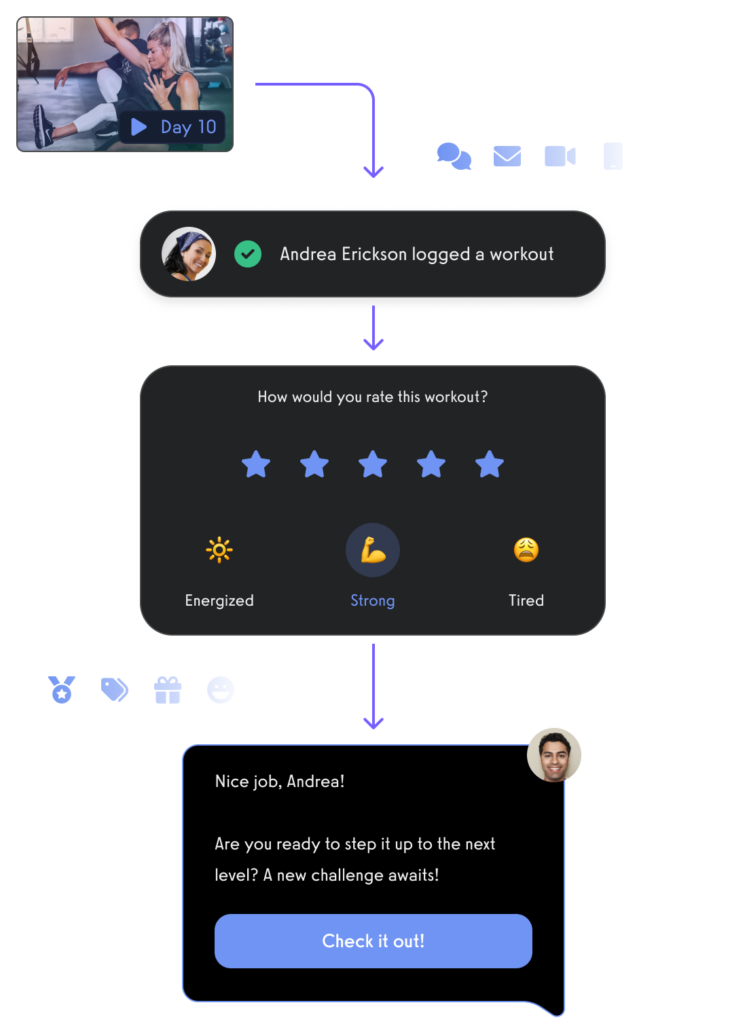
Manage leads with a fitness CRM.

Create and send fitness assessments with ease.
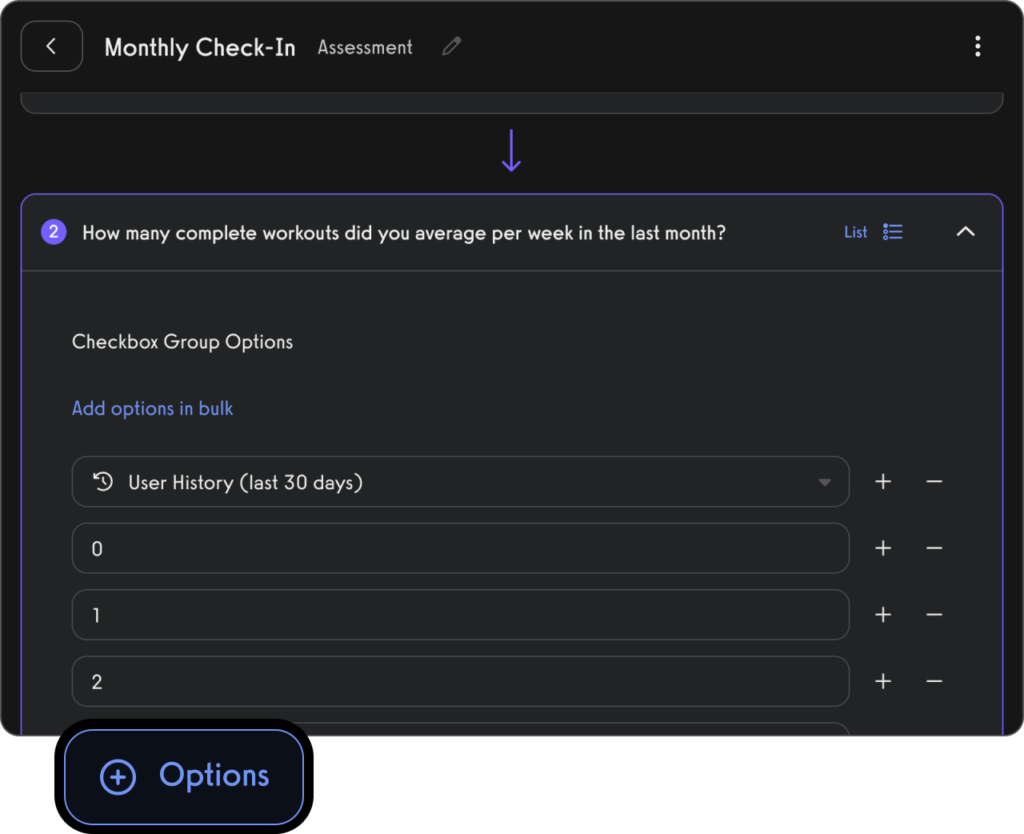
Use fitness habit tracking to inspire and motivate personal training clients (in-person and remote).

Use fitness progress photos to engage with clients.
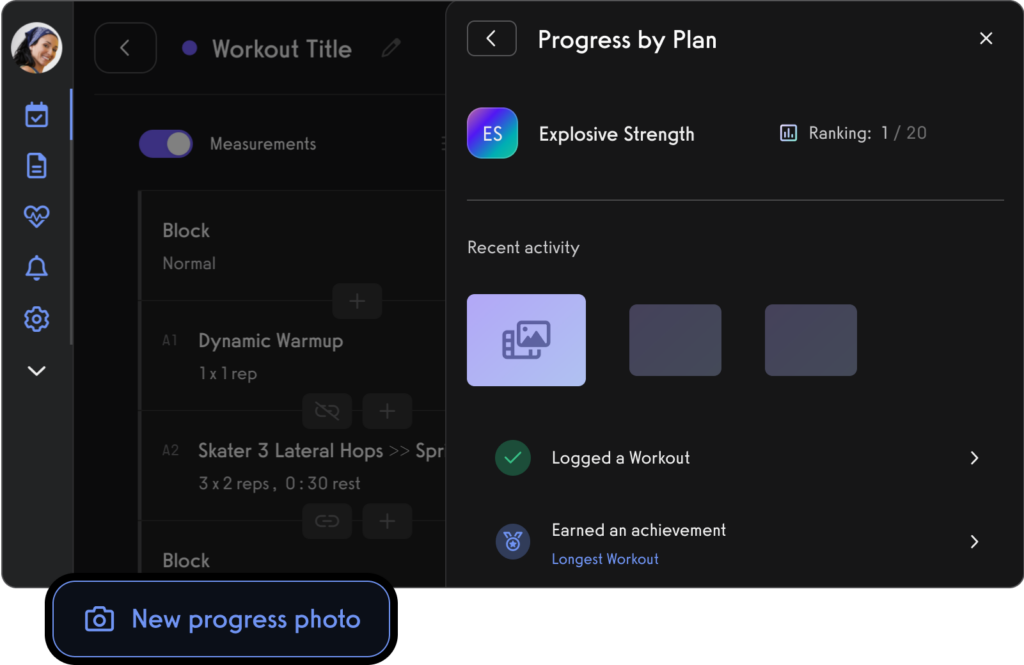
Use fitness leaderboards to track performance and inspire healthy competition.
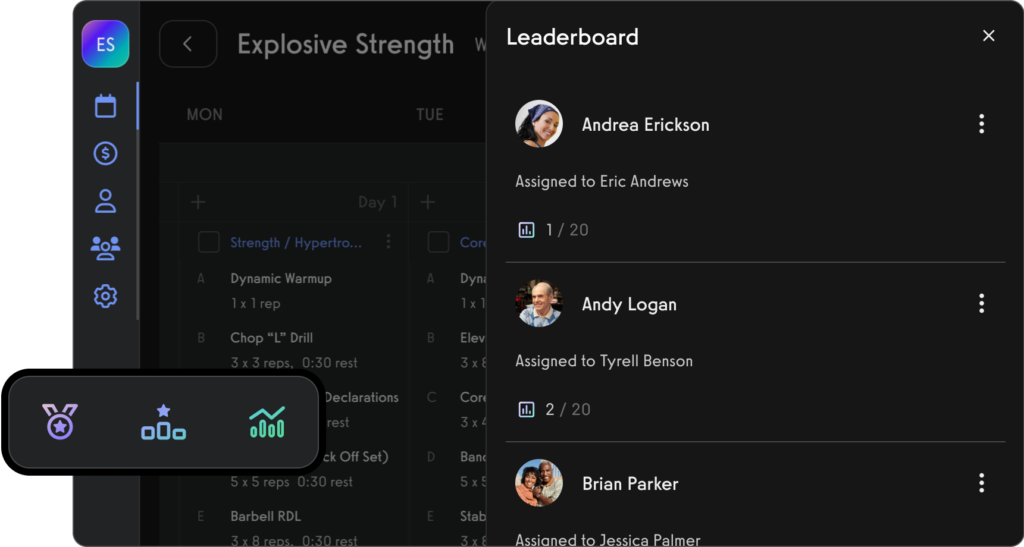
Use the exercise demonstration video library or create your own custom exercise demonstration videos.

Create workout plans for parents and dependents, teams and more.

Manage personal training clients with ease.

Book appointments for clients (Read More: Best Gym Booking Software)

Create classes and fitness groups

Manage fitness challenges (Read More: 100+ Fitness Challenge Ideas)
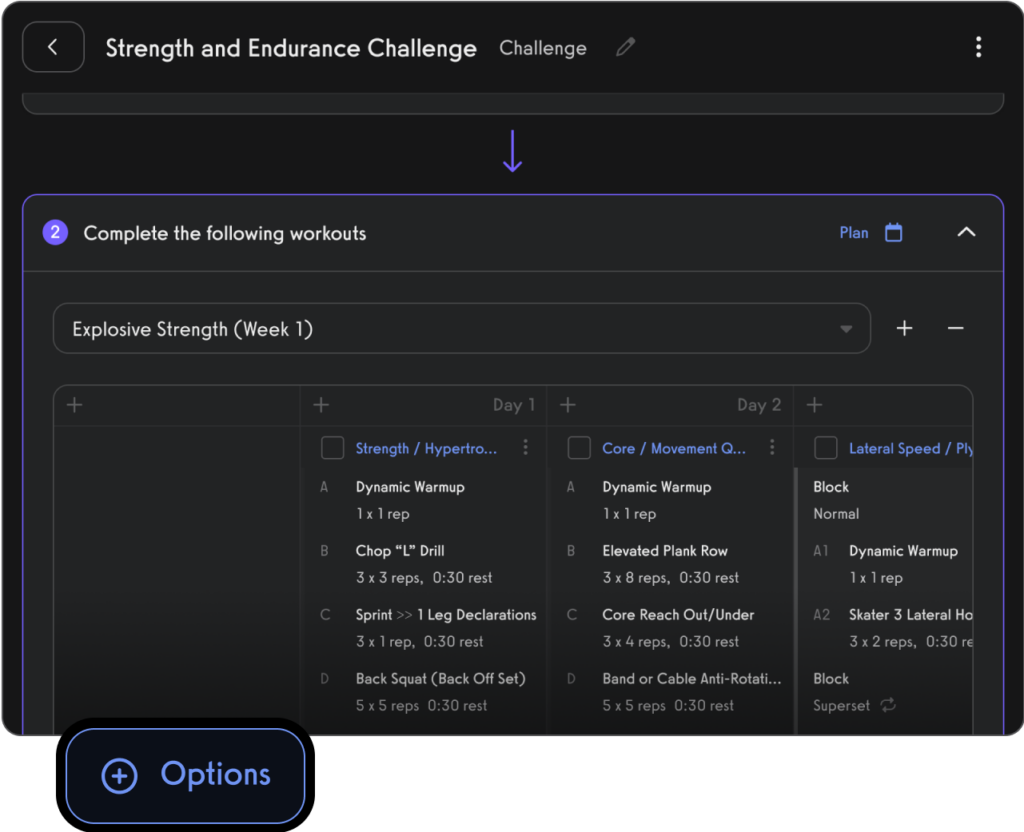
Process payments for open gym, classes, and personal training.

Communicate with gym members, athletes, team members, personal training clients, class members, parents, and dependents via SMS, email, and in-app push notification.
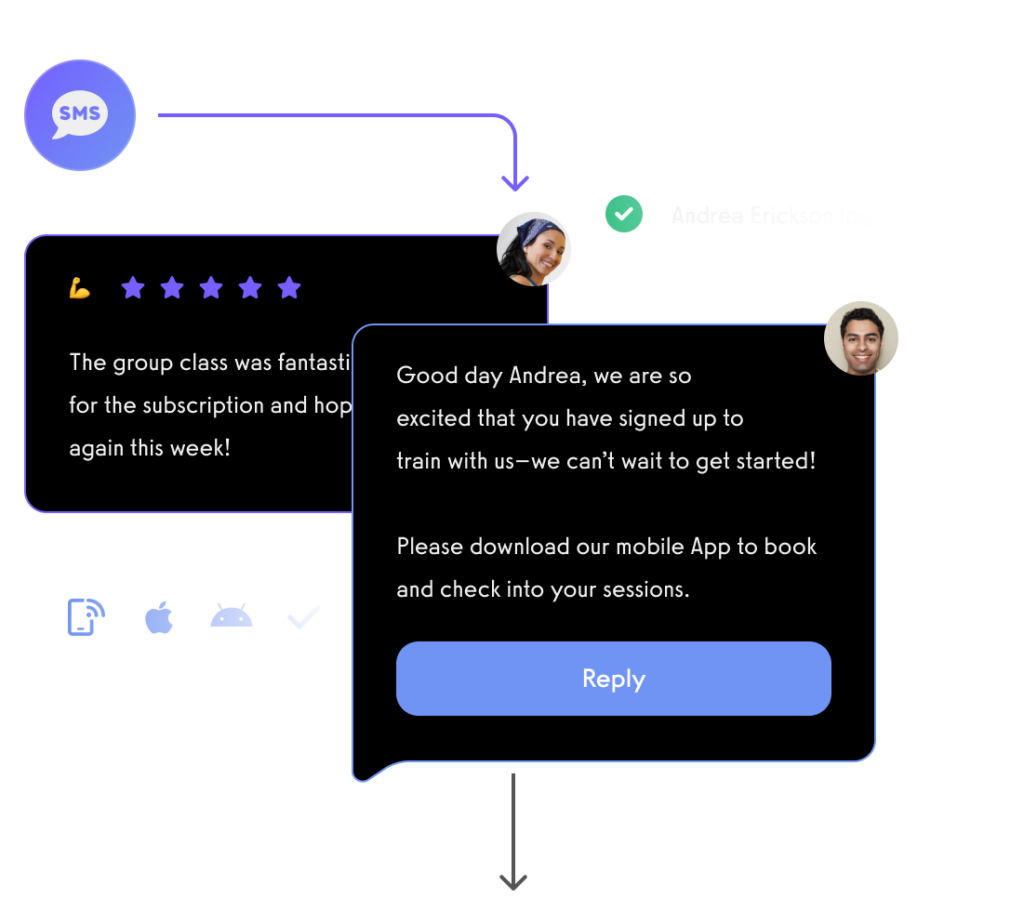
View performance over time, track personal records, and other fitness stats with performance reporting dashboards.
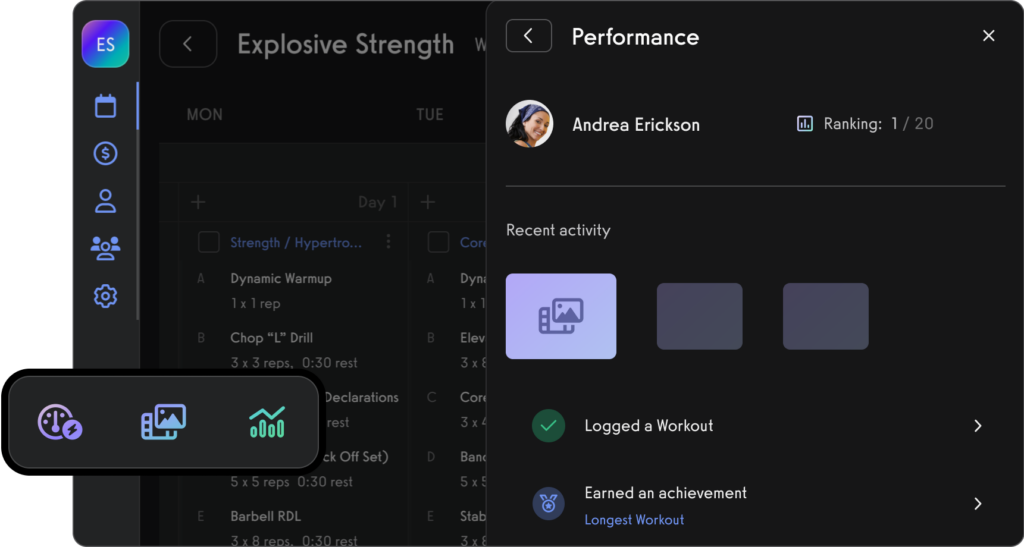
And of course, view all of your fitness business reports easily too.

All from your custom-branded fitness apps (Read More: Best Gym Mobile Fitness Apps Software)


Want to learn how your fitness business can take it to the next level? Get a demo now!









